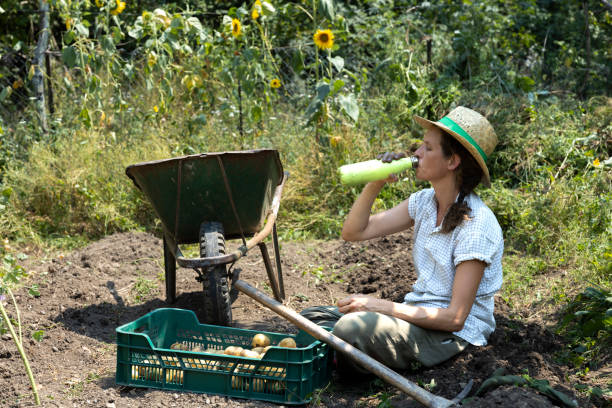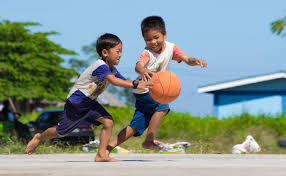Avoid Hitting the Wall: Essential Tips for Strenuous Activity
Category: #nutrition

If you are an active person, you probably know what this means.
I did such yesterday.
I forgot my age. Yes, that can be a factor too.
I overdid it Big Time.
I hit the wall. And could go no further.
What does “hit the wall” mean?
In endurance sports or long term hard exercise, “hitting the wall” or the “bonk” is a condition of overwhelming fatigue and loss of energy.
I was working hard cleaning in the yard. I was lifting, tugging, throwing, and moving items. The temps were actually nice. But I did not realize the amount of energy I was using.
I’m not a big breakfast eater. I did eat my toast and drank my Energizing Tea and Life Shake. But it wasn’t enough. What we “normally” eat for breakfast or lunch is usually below what is required for heavy exercise. Toast and a Life Shake is good for staying inside and doing the “usual stuff.”
(Energizing Tea does contain 70 mg of caffeine, but don’t rely on caffeine as your engine starter. The fuel is in the carbs.)
My breakfast was not what was needed for the strenuous exercise I was going to do that morning.
Before any strenuous exercise, and that can include cleaning out a locker in the yard, take time to eat a carbohydrate rich breakfast. Obviously one piece of toast it not enough, even adding the carbs of the Life Shake. I wasn’t looking at carbs. I was thinking protein.
But protein is not the fuel needed when there is work to do.
What happens when you “bonk” or “hit the wall” is that you have used up your first response glycogen stores in your body. You also are probably a bit dehydrated. (Remember it doesn’t take much to be dehydrated. I was too busy to drink!)
For women it is 9 cups of fluid over a day; for men it is 13 cups of fluid a day.
Now if you are starting out in the morning with your huge strenuous task, remember you are a deficit to start with from the overnight fast. You can see how quickly you can become dehydrated when exerting strenuous exercise. Your body fluid is down. What are you adding to start the day? More than a cup of caffeine??
Add some heat of the sun, and you are a great example of what dehydration can be.
What is glycogen?

“Glycogen is a form of glucose, a main source of energy that your body stores primarily in your liver and muscles. Your body needs carbohydrates from the food you eat to form glucose and then glycogen.”1
Choose good carbs to store; you know what kind. Oats, Rye, Steel cut oats, beans and whole grain rice, whole wheat breads, apples, berries, potatoes, sweet potatoes. Use some of last night’s carbs to start with a good breakfast: rice and beans and eggs? Potatoes, beans and eggs. Maybe a bit of cheese to garnish. Add an apple to much on the side.
Glucose is from carbohydrates (a macronutrient) in certain foods. Good carbs such as oats, (sorry Cheerios’ oats do not count as way too much sugar and low on good carbs. No wonder kids can’t sit still in school?)
When your body doesn’t need the stored glucose for immediate energy, it stores it in your muscles and liver. It puts this stored glucose into storage. (like the stored carbs from last night’s supper.) And we know how hard it can be sometimes to get things out of storage!
Your body creates glycogen from glucose in those good whole carbs in process called glycogenesis.
For an untrained individual, like myself as I was not thinking endurance activity, an average diet is able to store daily about 380 grams of glycogen in the body. This total amount is spread out throughout the muscular system and is not readily available. This is talking a whole day’s worth of glycogen.
When glycogen stores are not replenished during the exercise, your available energy storage is quickly depleted and in less than 2 hours of intense exercise. (I wanted to get it done!)
Glycogen is needed for any strenuous work and it doesn’t have to be special work; it could be your job as we know there are many jobs that require a whole lot of muscular effort.
Suddenly I was intensely tired and could do no more.

I had to stop. I could hardly walk into the house. Boy was I tired! Almost weary.
I drank a Shaklee’s Hydration product. It wasn’t enough. I was too dehydrated for instant results.
I then thought of a Recovery drink that is higher in carbs, sugars, and sodium. (I chose Shaklee’s Build+) I added this to my next drink, with more Hydration product.2
But I was sooo tired. I needed to lay down.
In about 30 minutes, I did feel better and was back on my feet. I was amazed at how different I felt. No longer tired.
I had never noticed the HUGE difference when you give your body what it needs at that moment! It was a lesson learned and to be shared.
What is this lesson?
For one, don’t try to be Superwoman or Superman. Learn to cut down big jobs into sections or days if needed. When you are on the job, look at what needs to be done. Break it up into sections that will allow you time to hydrate and replenish. Work with the weather if you can. (This can mean heavy work when the temps are cooler and not at mid-day.)
Two: Eat a good breakfast: even if I’m only trying to get yard work done in a short amount of time. (working against the heat of the day.) I suggest Oatmeal with fruits. High carb and good sugars. Drink a good amount of a good Hydration product. (I’m not talking Gatorade here.) Be careful as to quantity as you don’t want to swish those liquids when bending and stretching. You technically should drink your fluids one hour before exercise.
Three: Prep and have a hydration drink available to sip while you are working or exercising. Keeping hydration up does make a difference. Yes, this means that not only do you need a rake, or shovel, or trowel, or whatever equipment needed for the project, you also should prep a good hydration drink to have close by.

Four: Water is not your friend when you are working. Fluid levels are affected by many things. And water does not have the needed electrolytes you are expending.
Sports drinks are not your friend when you are dehydrated as many are too high in sugars and low in needed electrolytes.
Five: Pace yourself. Rome wasn’t conquered in a day. (If you are an endurance athlete, you need an different set of rules to reach your goal.) I’m talking to the average person who sets out to accomplish “great things.”
If you are running to get in shape for an upcoming race, let’s chat! There are different rules for fluids and foods when you are in competition.
Six: And most of all take time to recover. I’m not talking a nap on the couch. Yes, I laid down AFTER I had my Recovery Build+ drink and Hydration drink. (I am an older woman!) Recovery time is important!
I added a Recovery Supplement at bedtime. This one is an all natural anti-inflammatory and pain relief. Choose wisely to be able to sleep well without pain.
Recovery is important to your body.

Have you ever noticed that after a day in the sun, or a sweaty workout, your skin feels a bit gritty? That grit is actually the salts that have left your body along with the water when you sweat.
Hydration before the shower! Running water over your skin does not hydrate your skin. Stay hydrated through the exercise and you won’t notice the dry skin.
What to eat? Celery, cottage cheese help with fluid retention. Bananas are good for potassium. Nuts, seeds and dark green leafy greens are good for your tired muscles.
Calcium helps with muscle contraction and is a good liquid for the Recovery drink. Soy, coconut water, milk (now you know why the Indy drivers drink milk after a race), iced tea and a good Hydration product. Pedialyte is good. 3
With a child athlete: pack a banana, nuts, orange slices. Add a good hydration drink, not just a bottle of water.
Recovery foods are important to help with the healing of the muscles used during the strenuous exercise. (You do want to go back out tomorrow and finish the job?)Indy 500 winner drinking milk
Be choosy. No fast foods. No hot dogs or burgers. No fries. No popcorn as that kind of salt is really too much.
A good salad will be a good start. And maybe a glass of milk! We talked what to pack.
And get a good night’s sleep.
Next time: Plan ahead!
https://wellness.maryjessen.com/home
- https://my.clevelandclinic.org/health/articles/23509-glycogen
- https://us.shaklee.com/en_US/jessen/Nutrition/Fitness-%26-Exercise/Pre-%26-Post-Workout/c/24000
- https://www.nutritionnews.abbott/healthy-living/diet-wellness/thirsty-common-hydration-mistakes-you-may-be-making/#:~:text=In%


Facebook Comments